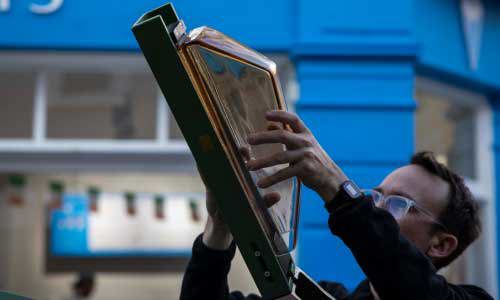Boom Nouveau
Boom Nouveau sculpture illuminates Cook Street
Boom Nouveau by collaborative practice Forerunner can be viewed on Cook Street.

The sculpture mimics the form of a tangible everyday urban street feature - the lamppost. The name Boom Nouveau refers to the rupture of the artwork emerging from the ground, with a nod to the influence of the craftsmanship of art nouveau.

The piece reintroduces an air of mystery and possibility into our surroundings. The effect is achieved by using familiar building materials and adding in artistic elements such as hand blown glass and cast bronze.

The sculpture was created to allow historic methods of production back into the everyday, side by side with contemporary city infrastructure. Boom Nouveau is a gentle reminder that we can take pride in the way our places are made and designed.

Forerunner said, “Our initial idea for Boom Nouveau came from a dissatisfaction with how we walk through the city, heads down, rushing around, not looking up to see what’s around us. We wanted to reintroduce a hand made or precious element into Cork city space. We focused on a lamppost as we like making things that are useful. The sculpture will shine a light on the city and encourage people to explore the city architecture as they navigate their way to work or guide them home.”

About the artists
Forerunner is a collaborative art practice. Andreas Kindler von Knobloch, Tom Watt and Tanad Aaron established the Dublin-based collective as a vehicle for the three of them to support each other's practice and interests and to collaborate on projects. The materially-focused practice looks at reimagining space and how things are made.

Since their first formal collaboration in 2016, Forerunner has worked within architectural form, building materials and the gallery as a staging ground. Using their background as gallery and theatre technicians, their work has an added feeling of temporality, hanging between a site of production (studio/workshop) and display (gallery/public) whilst at the same time allowing ‘use-value’ to creep into the space. Within this fixed circuit they use the premise that the viewer is a material too. The viewer needs to be able to engage with the work and so ‘use value’ here refers to a point of translation between material and a person, which inevitably becomes the work as a space. The space for the viewer is constructed through familiar materials, forms and established architectural/construction practices so as to allow an audience into it.
